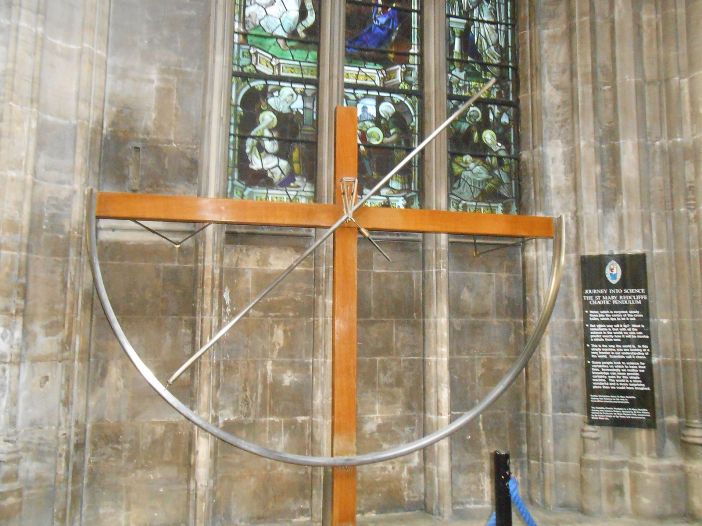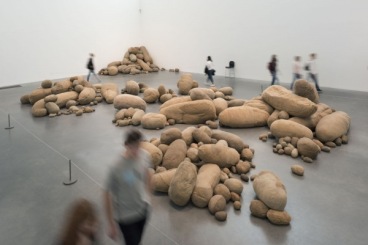This is not a commentary on current times, political or personal, but rather an examination yet again of finding meaning in unusual places. Of finding beauty in chaos.
It began with”the fairest, goodliest, and most famous parish church in England,” as the church of St. Mary Redcliffe was described by Queen Elizabeth I. It’s a Gothic masterpiece, found on a busy street in a gritty part of a city that is slowly finding its way out of a slave-trade inheritance to become a cultural incubator of the arts in the 21st century (including a very popular Wallace and Gromit tour). I was there for a few days last month and one of the very few photos that I took was of the accompanying sign to this water-powered pendulum found in St. Mary’s Redcliffe. The sign reads:
Journey into Science: The St. Mary Redcliffe Chaotic Pendulum. It goes on to describe the process of water moving through the cross beams, unpredictably tipping one way or another, and likening that unpredictability to the ways of the world.
In this simple machine you are looking at a new frontier in our understanding of the world. Scientists call it chaos. Some people look to science for certainties on which to base their lives. Increasingly we realize our knowledge can never provide certainty, even for this simple machine. The world is a more wonderful and a more surprising place than we could have imagined.
Chaos suggests a lack of rules and form, but maybe it’s really just describing an unseen structure or set of rules. Perhaps the water’s flow through the pendulum responds to rules that are beyond human imagination, or forms that haven’t been described yet. I have to think that much of our world, including our music, would seem incredibly chaotic to our ancestors, should they be able to visit us in 2018. Yet we are surrounded by patterns, and our music is based on recognizable progressions. Could it be that there is meaning in those things which we aren’t evolved enough yet to understand?
I’ve been spending some time with the piano music of Philip Glass this summer. To the resistant listener, it probably sounds random, with its repetitive patterns and unpredictable shifts. I am not an expert on his music, nor have I spent hours analyzing it, but I’ve found playing it to be a wonderful way to warm up my fingers and center my mind. The difficulties of his music are not the usual ones – playing the notes isn’t hard, but staying focused and negotiating the subtle moves in the music is.
Things which seem completely random and unrelated can still draw someone into an artistic experience. Perhaps because there are patterns that lie below the surface of seeing which speak to a hidden part of our brain. The works of artist Jackson Pollock, for example, have been analyzed using fractal analysis. Could this same process be applied to the music of Glass ? Does the human desire for patterns and repetition draw us even toward those things which might seem chaotic at first glance?

I begin working this week as the Interim Music Director at Church of the Epiphany in Washington D.C., and will be there for the next eight months. Church can, at its best, offer an antidote to life’s chaotic moments, don’t you think? I wonder if I’ll learn that the world is indeed a more wonderful and more surprising place than I could have imagined.
Peace,
Sonya
* * * * *
This blog represents my attempt to put thoughts together on various things that seem to connect – in my mind anyway. More often than not new ideas first involve reaching back to what was and I can only hope that the prehistoric San cave painting at the top of this page inspires all kinds of connections between old and new.
Feel free to pass this message along to anyone who might be interested. You can simply subscribe (look for the “Subscribe” button at the top of the post) to get a reminder of new posts, or you can register with a user name and password in order to comment. If a community conversation comes out of this, all the better. We have so much to share and so much for which we can be grateful.

 Who heard about Bob Dylan winning the Nobel Prize for Literature last year and said, “HUH?”?
Who heard about Bob Dylan winning the Nobel Prize for Literature last year and said, “HUH?”?